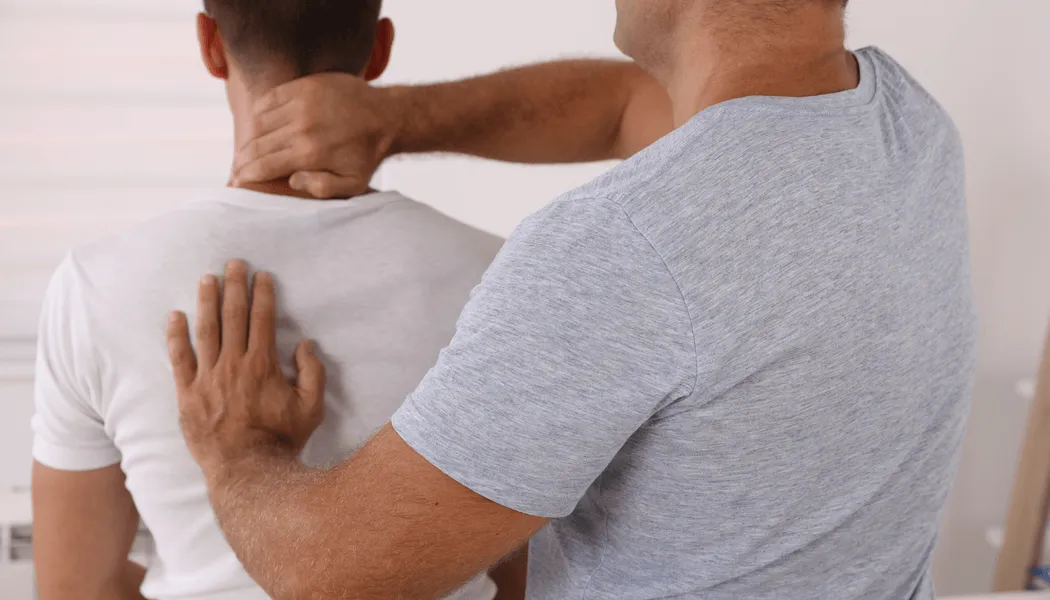Understanding the Challenge: Osteoporosis and the Exercise Paradox
Osteoporosis is a condition characterised by a loss of bone density, which makes bones weak, brittle, and more susceptible to fractures. Doctors universally recommend weight-bearing exercise (like walking, jogging, or weightlifting) to help stimulate bone growth and strengthen muscles that support the skeleton.
Herein lies the paradox: the very exercises that help build bone can also increase the risk of falls and fractures for someone with compromised balance or significant bone loss. This is where the magic of water comes in.
What is Aqua Therapy?
Aqua therapy, also known as hydrotherapy or aquatic physical therapy, is more than just swimming laps. It involves specific exercises performed in a warm-water pool, often under the guidance of a trained physical therapist or instructor. The therapy harnesses three key principles of water:
- Buoyancy: Water counteracts gravity, supporting your body weight. When you're submerged up to your chest, your body bears only about 25-35% of its weight. This dramatically reduces stress on your joints and spine, minimizing pain and the risk of injury.
- Resistance: Water provides 12 times the resistance of air. Every movement you make is a resistance exercise, strengthening muscles in all directions without the need for heavy weights.
- Hydrostatic Pressure: The pressure of the water on your body acts like a gentle compression sock, which can help reduce swelling, improve circulation, and increase your awareness of your body's position in space (proprioception).
Top Benefits of Aqua Therapy for Osteoporosis
For individuals with osteoporosis, the pool isn't just a place for recreation—it's a therapeutic environment. Here are the key benefits.
Drastically Reduced Impact and Fear of Falling
This is the most significant advantage. The buoyancy of water cushions your joints and creates a soft-landing environment. The fear of falling—a major barrier to exercise for many—is virtually eliminated. This freedom allows you to move with more confidence and perform exercises you wouldn't dare try on land.
Full-Body Resistance for Muscle Strengthening
Strong muscles are essential for supporting your skeleton and preventing falls. In the water, simple movements like walking, lifting your legs, or pushing your arms through the water engage your core, legs, and upper body. This 360-degree resistance builds functional strength that translates directly to better stability and posture in your daily life. Stronger muscles pull on bones, providing a gentle stimulus that encourages bone health.
Significant Improvement in Balance and Coordination
Poor balance is a leading cause of fractures in older adults. Aqua therapy is an exceptional tool for balance training. The water slows your movements, giving your brain more time to react and engage stabilizing muscles. You can safely practice single-leg stands and dynamic balance exercises that would be too risky on a hard floor.
Pain Relief and Increased Flexibility
The warm water used in therapy pools (typically 88-94°F or 31-34°C) is incredibly soothing. It helps relax tight muscles and ease the chronic joint pain that often accompanies aging and osteoporosis. This increased comfort allows for a greater range of motion and improved flexibility.
Enhanced Cardiovascular and Mental Well-being
Aqua therapy is a fantastic cardiovascular workout that gets your heart pumping without stressing your body. Furthermore, the social aspect of group classes and the sheer enjoyment of moving freely in the water provides a significant psychological boost, reducing stress and increasing overall quality of life.
Sample Aqua Therapy Exercises for Osteoporosis
A licensed therapist will design a program for you, but here are examples of common, safe exercises:
- Water Walking/Jogging: Walk forward, backward, and sideways in chest-deep water to build leg strength and improve coordination.
- High-Knee Lifts: Stand near the pool wall for support. Slowly lift one knee toward your chest, hold for a moment, and lower it. This strengthens hip flexors and core muscles.
- Leg Kicks: Holding onto the side of the pool, extend one leg straight out in front, to the side, and to the back. The water’s resistance will work your glutes and leg muscles.
- Wall Push-ups: Stand facing the pool wall, place your hands on the edge, and perform a push-up motion. This strengthens your arms, chest, and shoulders.
- Arm Exercises with Foam Dumbbells: Use aquatic dumbbells (which float and create resistance when pushed down) to perform bicep curls, shoulder presses, and other upper-body strengthening movements.
Important:Important: Always consult with a doctor or physical therapist before starting any new exercise program.
How to Get Started with Aqua Therapy
- Speak with Your Doctor: Discuss whether aqua therapy for osteoporosis is a suitable option for you. Get a referral to a physical therapist if needed.
- Find a Program: Look for certified programs at local hospitals, physical therapy clinics, community centers, or YMCAs. Ask if they have instructors experienced with clients who have osteoporosis.
- Prepare for Your First Session: You don’t need to be a swimmer! Most exercises are done standing in waist- or chest-deep water. All you need is a comfortable swimsuit, a towel, and a pair of water shoes for better grip.
Take the Plunge Toward Better Bone Health with Physiotattva
Osteoporosis doesn't have to mean a sedentary life. Aqua therapy for osteoporosis offers a safe harbor—a place where you can build strength, regain confidence, and actively manage your health without fear. It is a powerful, proven tool that empowers you to improve your balance, strengthen your muscles, and ultimately protect your bones.
If you're looking for a gentle, effective, and enjoyable way to support your body, talk to your healthcare provider about taking the plunge into aqua therapy. Your bones will thank you.
At Physiotattva physiotherapy clinics in Bangalore and Hyderabad, you receive personalised care tailored to your specific needs, ensuring effective results and comfort throughout your journey to recovery.
Don’t wait to start your recovery! Get in touch with Physiotattva for more details! Contact us at +91 89510 47001.



-Physiotherapy.webp)
-for-Shoulder-Pain-Relief.webp)
-for-Knee-Pain-Relief.webp)


-for-Back-Pain-Relief%20(1).webp)





.webp)











.webp)


.webp)





.webp)
.webp)


.webp)
.webp)

.webp)

.webp)

.webp)
.webp)

.webp)


.webp)








%20(1)-p-3200.jpeg)


.jpg)
.webp)
.webp)
.webp)




